We may not have the course you’re looking for. If you enquire or give us a call on +971 8000311193 and speak to our training experts, we may still be able to help with your training requirements.
Training Outcomes Within Your Budget!
We ensure quality, budget-alignment, and timely delivery by our expert instructors.

Ever feel like your decisions are tangled up in a web of endless options? Then, Decision Tree Analysis might be your solution. This powerful tool breaks down complex choices into easy, step-by-step diagrams, helping you visualise outcomes and make well-informed decisions. Let’s dive into how Decision Trees can turn tough choices into straightforward answers.
Table of Contents
1) Understanding Decision Tree Analysis
2) Different Types of Decision Tree Diagrams
3) Steps to Create a Decision Tree
4) Why Use a Decision Tree?
5) Advantages and Disadvantages of Decision Tree Analysis
6) Conclusion
Understanding Decision Tree Analysis
Decision Tree Analysis is a structured approach to making decisions in the face of uncertainty. By visualising different options and their potential outcomes, it helps evaluate the consequences of each decision. This method is particularly useful in Risk Management , cost-benefit analysis, and strategic planning.
Decision Trees simplify complex decisions by breaking them into manageable steps, guiding decision-makers toward the most beneficial course of action. It also incorporates probabilities and potential impacts, ensuring the decision-making process is data-driven and strategic.
Different Types of Decision Tree Diagrams
Two common Decision Tree types are regression trees and classification trees, each designed for specific kinds of data.

Regression Trees
Regression trees are used when the outcome is a continuous variable, such as predicting sales, prices, or any measurable value. These trees break down the data into smaller segments based on the decision points that most affect the outcome. They help forecast and predict trends, providing numerical outcomes for different decisions.
Classification Trees
Classification trees are used for categorical outcomes—like whether a customer will buy a product (yes or no). These trees help classify objects or cases into predefined categories. This method is valuable for identifying patterns, such as customer behaviour or predicting whether a patient has a particular disease based on symptoms.
Steps to Create a Decision Tree
The following are the steps to create a Decision Tree:
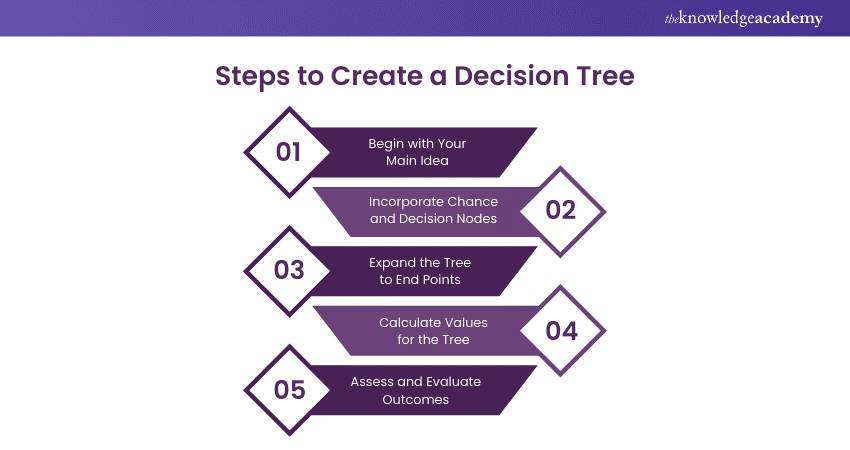
1) Begin with Your Main Idea
Start by identifying your main decision or question. This will be the root of your tree. For example, if you decide whether to expand your business, this decision point forms the foundation for other branches to grow.
2) Incorporate Chance and Decision Nodes
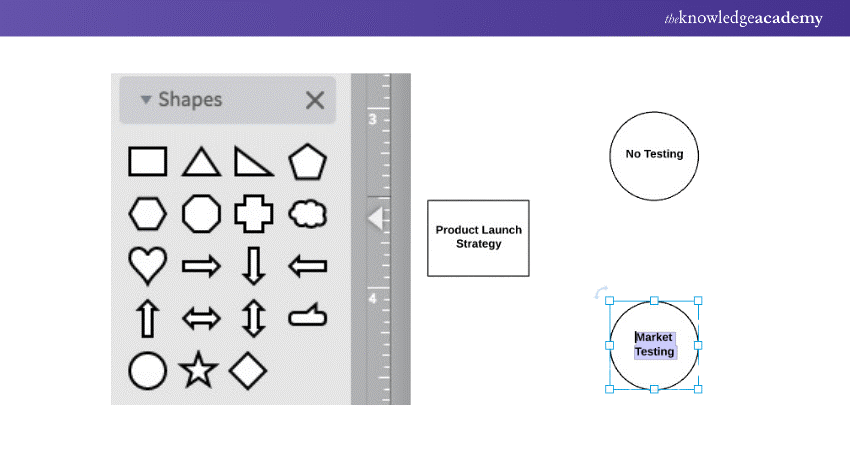
Add nodes to your tree. Squares represent decision nodes, while chance nodes, which represent uncertainties or outcomes outside your control, are typically represented by circles. For instance, if you're considering expanding a business, decision nodes might represent locations, while chance nodes could represent economic conditions in each area.
3) Expand the Tree to End Points
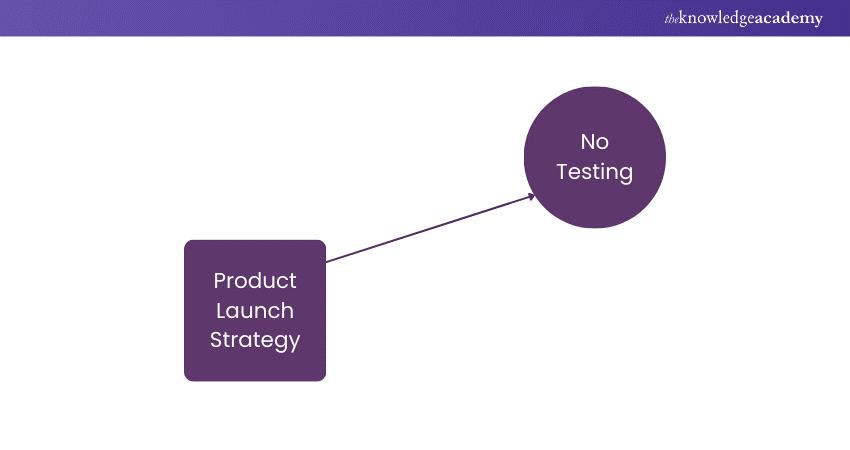
From each node, add branches that lead to the possible outcomes of your choices or chance events. This process continues until all options are exhausted, resulting in endpoints or leaves where the outcomes are visible. Depending on the decisions made at each step, these outcomes can be positive as well as negative.
4) Calculate Values for the Tree
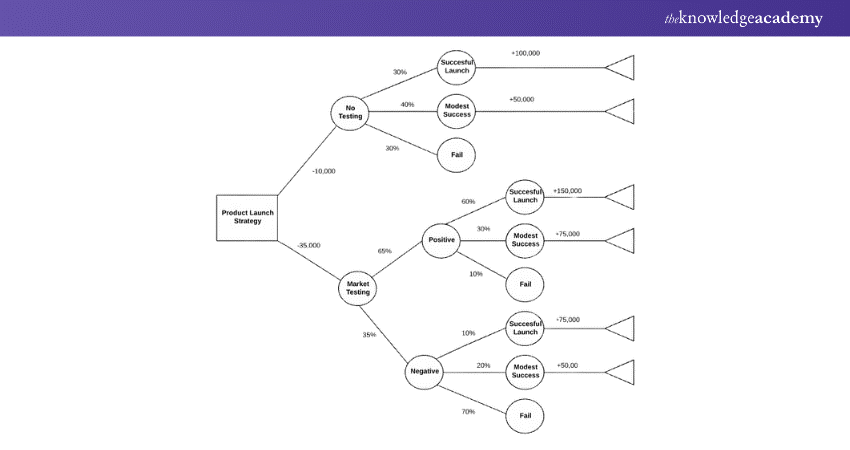
Assign values or probabilities to each branch of the tree. This could be the potential profit, cost, or likelihood of a specific outcome. By calculating the expected value of each path, you can estimate which decisions will likely yield the best results.
5) Assess and Evaluate Outcomes
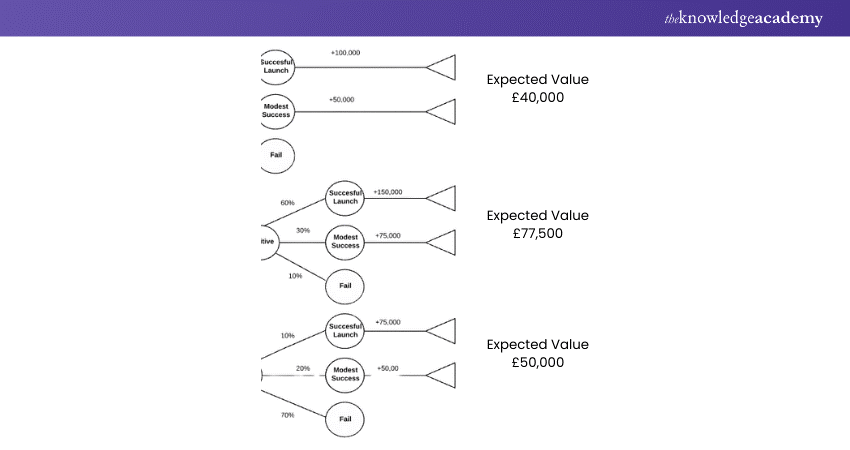
Once your tree is complete, evaluate the outcomes by comparing the different branches. Choose the path with the highest expected value or the one that best aligns with your goals. This step helps you make confident data-driven decisions.
Master data manipulation with our Pandas for Data Analysis Training—sign up now and elevate your data skills!
Why Use a Decision Tree?
Decision Trees are invaluable because they provide a structured, visual way to analyse choices, reducing the guesswork in decision-making. Here’s why they are so effective:
Handling Repeated Decisions
Decision Trees are excellent for scenarios where decisions must be made repeatedly, such as in business operations or Project Management. The tree helps identify patterns and outcomes, allowing users to replicate successful decisions or avoid past mistakes.
Reducing Bias
By laying out all options and their potential outcomes, Decision Trees help reduce personal bias. Each branch is evaluated based on data and logic rather than instinct, assisting users to make objective decisions rather than relying solely on intuition.
Assisting Users in Making Choices
Decision Trees simplify the process for individuals or teams that need to make critical decisions. By visually mapping out all possibilities and their consequences, users can easily compare different choices and select the most beneficial one, whether for a business strategy or personal decision.
Predict the future with confidence—join our Predictive Analytics Course today and harness the power of data-driven insights!
Advantages and Disadvantages of Decision Tree Analysis
Decision Tree Analysis has many advantages but also some limitations:
Advantages:
a) Simplicity: Decision Trees are easy to understand and interpret, even for those without technical expertise.
b) Flexibility: They can handle numerical and categorical data, making them applicable to various situations.
c) Transparency: Decision Trees lay out all possible outcomes and provide clear reasoning for each choice, making the decision-making process transparent and defendable.
Disadvantages:
a) Overfitting: Decision Trees can sometimes become too complex, especially with large datasets. This leads to overfitting, in which the tree fits the data too closely and may not generalise well to new data.
b) Instability: Small changes in the data can change the tree's structure, making it less reliable in certain cases.
c) Complexity: Decision Trees can become unwieldy and difficult to manage for large datasets with many variables.
Conclusion
Decision Tree Analysis transforms complicated decisions into clear, visual diagrams, making it a go-to tool for anyone seeking structured decision-making. Decision Trees help users evaluate options based on data rather than guesswork by plotting possible outcomes and probabilities. As a decision-making tool, Decision Tree Analysis encourages thoughtful choices and reduces uncertainty, making it a valuable technique in various fields.
Advance your career with our Advanced Data Science Certification—join now and become a leader in data-driven decision-making!
Frequently Asked Questions

A Decision Tree includes:
a) A root node (the main decision)
b) Branches (representing different options or outcomes)
c) Leaf nodes (endpoints where outcomes appear)
Decision nodes for choices and chance nodes represent uncertainties, making the entire process visual and structured.

Decision Trees reduce bias by providing a structured framework for analysing all possible choices and outcomes based on data, not personal opinion. This objectivity ensures decisions are evaluated on facts and probabilities, limiting the influence of individual preferences or assumptions.

The Knowledge Academy takes global learning to new heights, offering over 30,000 online courses across 490+ locations in 220 countries. This expansive reach ensures accessibility and convenience for learners worldwide.
Alongside our diverse Online Course Catalogue, encompassing 19 major categories, we go the extra mile by providing a plethora of free educational Online Resources like News updates, Blogs, videos, webinars, and interview questions. Tailoring learning experiences further, professionals can maximise value with customisable Course Bundles of TKA.

The Knowledge Academy’s Knowledge Pass, a prepaid voucher, adds another layer of flexibility, allowing course bookings over a 12-month period. Join us on a journey where education knows no bounds.

The Knowledge Academy offers various Data Science Courses, including the Decision Tree Modeling Using R Training, Python Data Science Course and Advanced Data Science Certification Course. These courses cater to different skill levels, providing comprehensive insights into Clustering in Data Mining.
Our Data, Analytics & AI Blogs cover a range of topics related to Data Science, offering valuable resources, best practices, and industry insights. Whether you are a beginner or looking to advance your Data Analytics Skills, The Knowledge Academy's diverse courses and informative blogs have got you covered.
Upcoming Data, Analytics & AI Resources Batches & Dates
Date
 Decision Tree Modeling Using R Training
Decision Tree Modeling Using R Training
Fri 28th Feb 2025
Fri 4th Apr 2025
Fri 27th Jun 2025
Fri 29th Aug 2025
Fri 24th Oct 2025
Fri 5th Dec 2025







 Top Rated Course
Top Rated Course



 If you wish to make any changes to your course, please
If you wish to make any changes to your course, please


